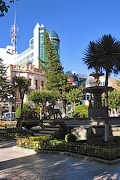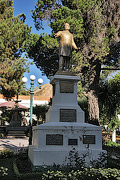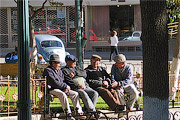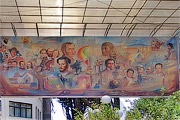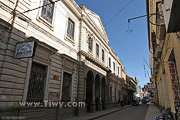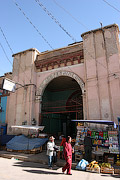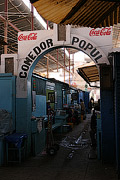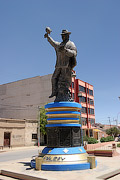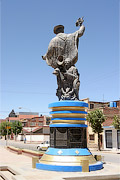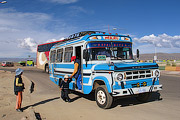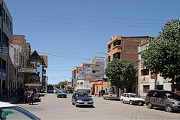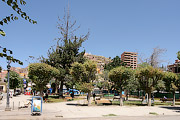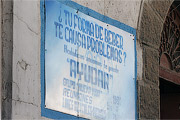Oruro, Bolivia
February 2008
To tell you the truth, lovers of the European civilisation cannot do anything in Oruro. This Bolivian town exists for those, who “considered a penny-worth comfort as negligible”, are ready to breathe the rarefied air, surrender themselves to scorching sun rays and sink into plain mode of local working class.
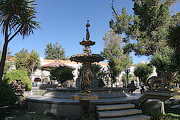
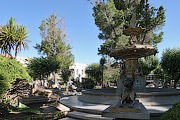
Oruro is situated in 230 km from La Paz at the height of 3700 meters above the sea level. It was founded on February 1, 1606 and by its birth it owes to rich deposits of silver. When this precious metal almost expired the town began to fall into decay, desolation, and its inhabitants started to scatter around in an effort “to make fast money”, more perspective places.
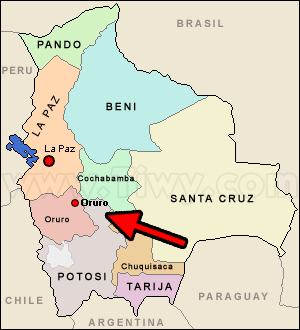
But it turned out that world capitalism required tin and this metal was in abundance in Oruro. So, at the end of the 19th and beginning of the 20th century the town started to revive. At that time there appeared the Plaza 10 de Febrero (10th February square), on which, later, they built an elegant fountain guarded by bronze dogs. The square got its name after Indian uprisings of 1781.
Along its perimeter there is a town hall, prefecture, trade chamber and other government offices, which are usually omitted by tourists. If one is to judge, there are things that are more interesting to do than meeting alcalde, prefect or president of local merchant-businessmen.
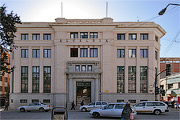
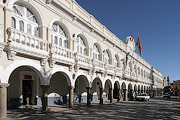
The monument to Aniceto Arce, one of Bolivian presidents, under whom they started to build railways in the country, towers above the same square. On the monument there are many plates with words of gratitude to this great Bolivian. If I had time, I would have ordered one on my behalf, as it is in Bolivia you start to understand all advantages of this means of transport, which is being impudently forced out by auto-petroleum monopolists.
I took a photo of these four former miners at the square. Work-weary hands, parchment skin, long working life... After countless number of days spent in dark pits, they rightfully enjoy the sun light..
San Francisco church and especially its stone portal of the 18th century look very impressive.
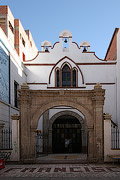
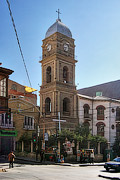
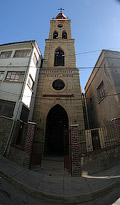
In Oruro there are a number of other churches, which, as per their decoration and luxury yield to those that rise in Potosi. So you start thinking, that even with clergymen one can see class approaches: for some – it is luxury of baroque, and for some - stern simplicity of stone is enough.
I suggest this fresco of one of the central streets of Oruro to those, who like to rake over old ashes. I'm sure that all depicted on it people have something to do with history of the town. But who is who? A tricky question. To give a reply is probably more difficult than in a TV game “Jeopardy!”
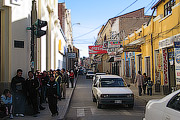
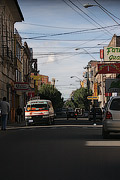
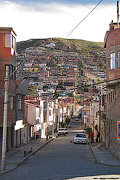
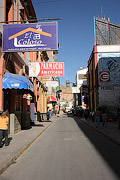
It is not that easy to visually find an effective view of Oruro streets. I hope that this mosaic of photos will help a potential tourist to realise what to expect in this miners town, where search for public catering points pushes to the background the beauties of “environment”.
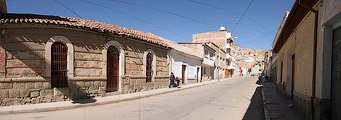
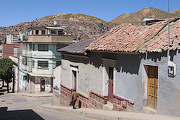
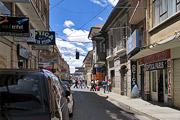
The town is attractive for tourists at the days of traditional February carnival, one of the brightest and original ones at the South American continent.
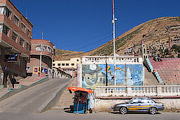
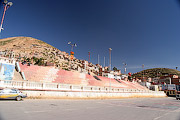
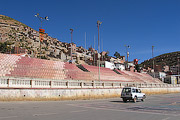
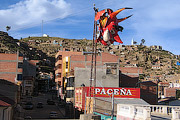
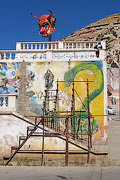
I couldn't come here during the carnival. So I had to take photos of deserted tribunes, naked pavement, on which festive groups of dancers and musicians used to walk. Cracked mask of devil that looks down on the procession from the height of its privileged pole looks rather symbolic. Outside the carnival it is conceived as something irrational, surrealistic in the spirit of Salvador Dali.
The building of town post-office is included in tourist routes. It completely preserves the spirit of the 19th century – the time of its construction. The sole client at the moment of shooting was quite a Russian guy, who refused to communicate and, putting his hat over his eyes, slipped by, having muttered: “This place is full of disagreeable types!”


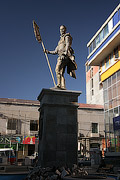
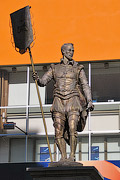
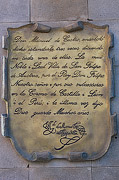
Don Manuel Castro y Padilla – is a founder of the town. He thrice banged this flagstaff against the new land and declared it a property of king Philip III.
At the market Fermin Lopez I faced the same disorder and anti-sanitary conditions that happen at improvised sales near Moscow metro stations. And the public canteen was a replica of those Moscow points, which half legally used to sell donner kebab, shish kebab and pies of suspicious origin. Looking at this photo now, I ask myself a question: what circumstances could make me take a risk and have a meal in this canteen?
Here are some more topics of Oruro. Sculpture composition on carnival topic (I had no time to read carefully those plates at the plinth, but, I think, this man had something to do with protection of folklore art).
A typical regular bus of these area. It used to serve the American backwoods, and presently honestly completes its service on altiplano.
Rajka Bakovic street.
Parque de la Union.
At midday the streets of Oruro are empty, the sun annoys too much. In order to while away the time, one can drop at the “Society of anonymous alcoholics”, there is such a society here.

